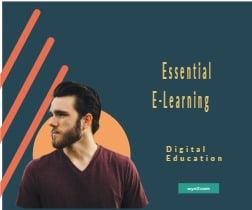Introduction
Online education has revolutionized the way people learn, offering flexibility, accessibility, and innovative teaching methods. With advancements in technology, distance learning and web conferencing tools have made education more inclusive than ever.

The Rise of Distance Learning:
Distance learning has eliminated geographical barriers, allowing students to access courses from top universities worldwide. Platforms like Coursera, edX, and Udemy offer certifications and degrees entirely online.
– Flexibility: Students can learn at their own pace.
– Cost-Effective: Reduces expenses related to commuting and physical materials.
– Global Access: Breaks down location-based limitations.
Learning Through Web Conferencing
Web conferencing tools like Zoom, Microsoft Teams, and Google Meet have become essential for virtual classrooms. These platforms enable:
– Live interactions between students and instructors.
– Screen sharing for presentations and collaborative projects.
– Recorded sessions for later review.
Key Benefits of Online Education
1. Personalized Learning: AI-driven platforms adapt to individual learning styles.
2. Wider Course Variety: Access niche subjects not available locally.
3. Self-Paced Study: Ideal for working professionals and non-traditional students.
Online Education Challenges and Solutions
While online education offers many advantages, challenges like lack of motivation and technical issues exist. Solutions include:
– Gamification to boost engagement.
– Reliable tech support for seamless learning.
The Future of Online Education
E-learning isn’t just an alternative to traditional education—it’s a fast track to career success. Whether you’re learning coding, marketing, or leadership skills, the right online course could be the key to your next promotion, salary bump, or dream job.
Emerging trends like VR classrooms, AI tutors, and blockchain-based certifications are set to further enhance digital learning.
Ready to start? Browse platforms like Coursera, Udemy, or LinkedIn Learning and take the first step toward your career transformation today!
Conclusion
Online education is here to stay, offering unmatched flexibility and opportunities. By leveraging distance learning and web conferencing, students worldwide can achieve their academic goals efficiently.
